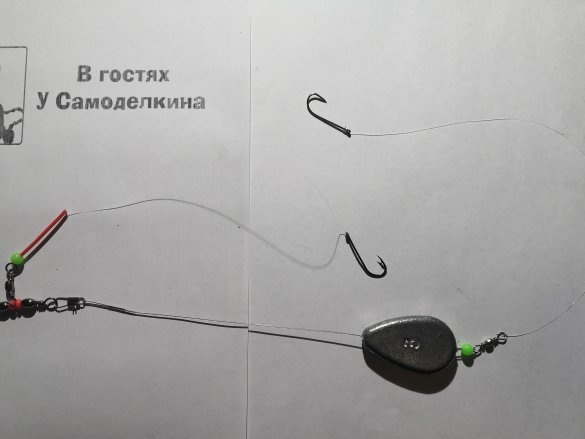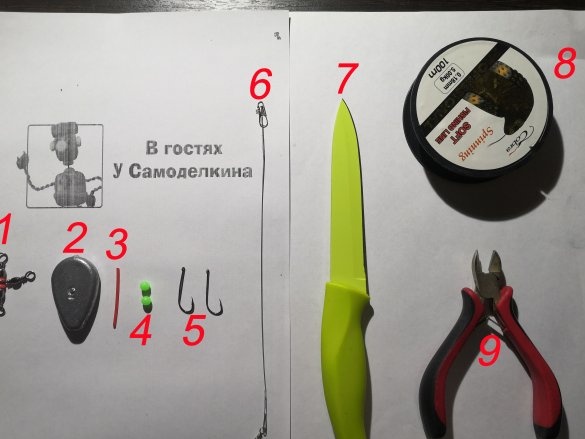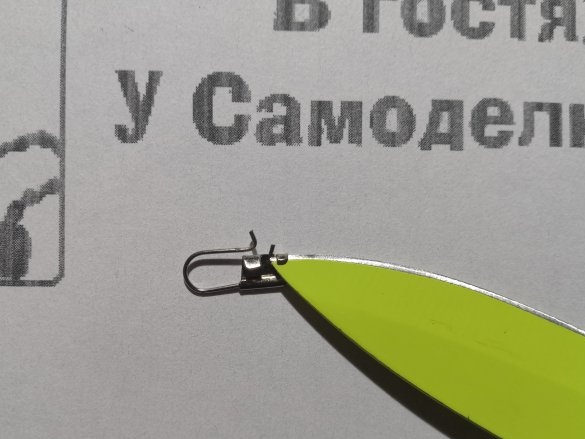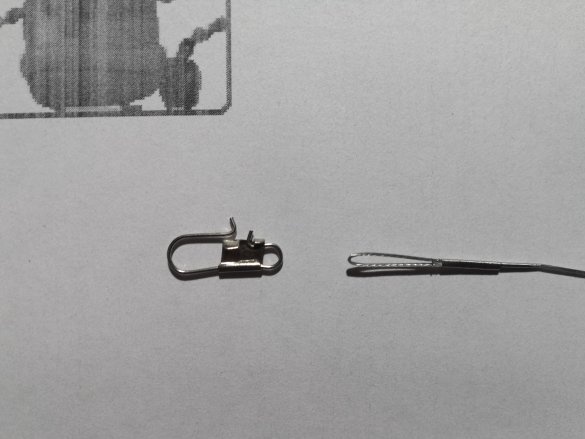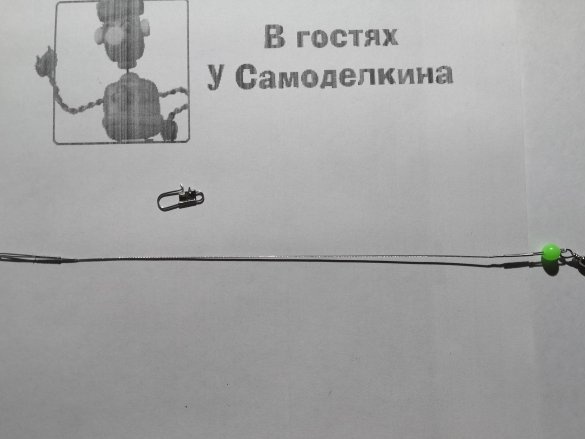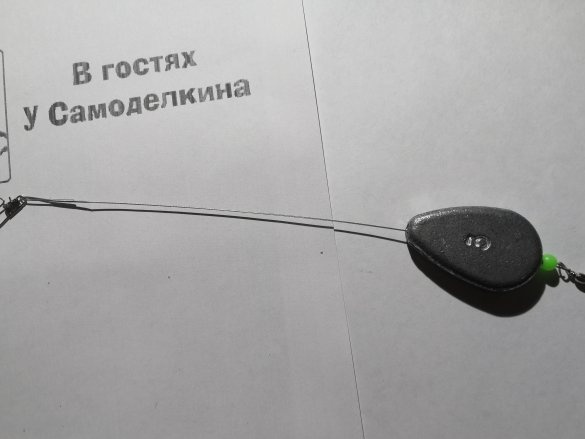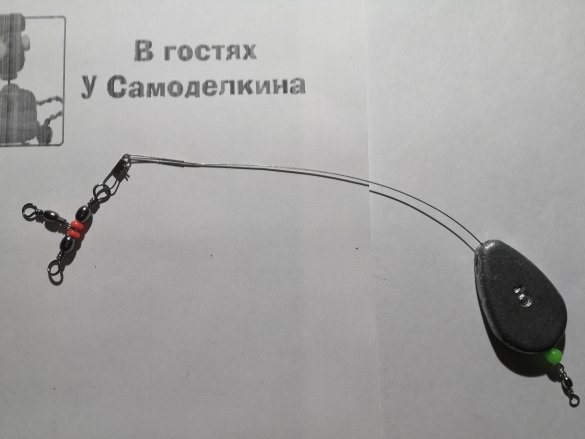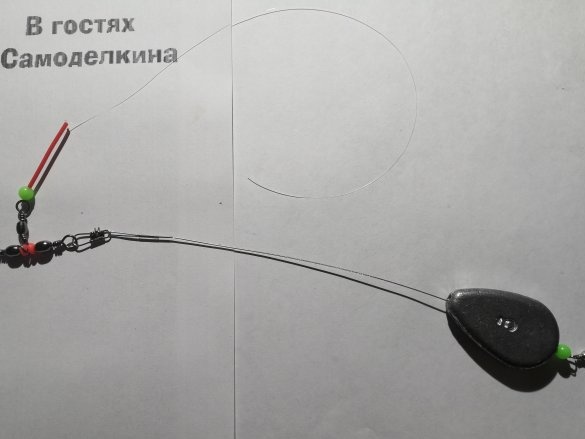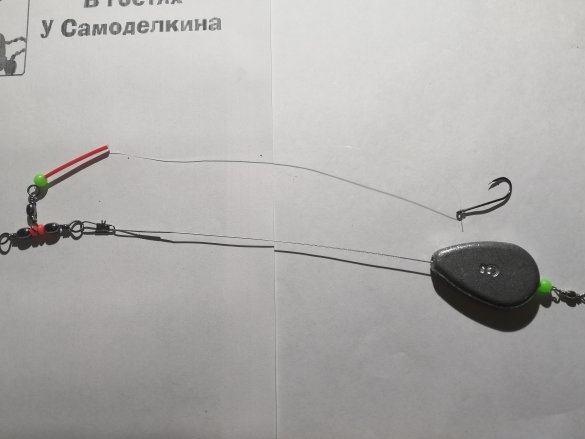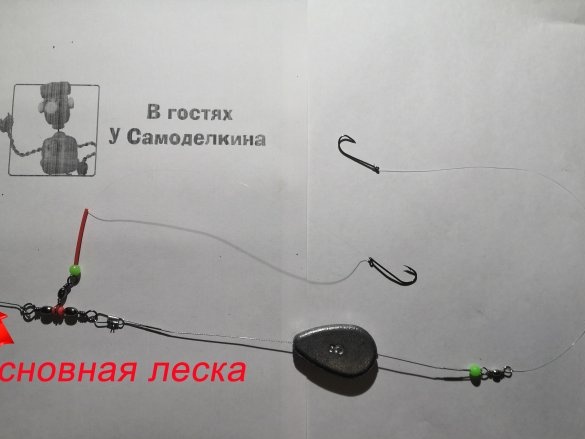Hello dear readers!
Basically, all methods of making donkey or the more familiar name of the appetizer are based on equipping the tackle with a heavy sinker, which creates great resistance for the fish when it is bite. I want to show my idea of equipment using a sliding sinker. Anyone who is fond of fishing will be able to collect it, without much effort and expense. And all related fixtures for installation is in any fishing store.
I will tell a little about its superiority over other ways of equipping when fishing bottom fish. When the donkey is thrown to the intended place, when the sinker lies at the bottom of one of the hooks (the load mounted below is at the very lowest point of fishing). The next hook is raised slightly above the bottom, thereby allowing us to catch another horizon. When biting a fish, the fishing line moves smoothly through a sliding sinker, without creating resistance to your trophy and goes directly to the signaling device.
1) Swivel tee
2) Sliding sinker (weight depends on your fishing conditions, current, depth, etc.)
3) Cambric
4) Luminous beads
5) Hooks
6) Metal leash (not less than 20cm)
7) Knife
8) Fishing line
9) Side cutters
We proceed to the manufacturing process:
Step One: Dismantle the carabiner.
Carefully with a knife, bend the antennae on the carabiner fastener a little and separate this carabiner from the leash.
Step Two: Skip the bead.
We pass a bead through the free end of the leash (I use a luminous one, at the bottom in the dark thickness of the water it will not be superfluous to attract attention).
Step Three: Finish Metal Lead
In the wake of the bead we pass our sinker. We dress back the leash on the carbine and with the side cutters we squeeze the antennae that you bent before.
Step Four: Install Tee
Open the latch of the carabiner and mount our tee-twirl. We also tighten the antennae on this side, for reliable fixation
Step Five: Cooking the Top Leash
We tie a fishing line to a tee.We put a bead and a cambric on this line (we need the leash to be set aside and it does not get tangled), we fix it in place. We make the length of the leash so that the hook is at the level of the sinker (so there is less chance of getting tangled when throwing) and we tie it up.
Step Six: Knit the bottom leash
Through the free ring that we have under the sinker we attach yet another leash with a hook. And the last step will be our whole under the tree attach snacks to the main fishing line.
Here is such a very simple way to collect and increase your chances of catching captured fish from the bottom. It is also possible to make several of them at home, and in case of a cliff break, calmly and quickly replace them right on the shore.
All successful fishing no tail or scales.


